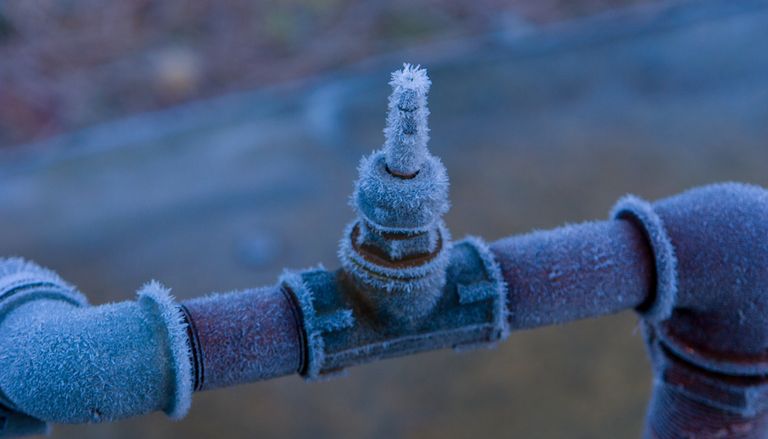The content on the next paragraphs on the subject of Preventing and dealing with frozen pipes is totally entertaining. Read it for your own benefit and decide what you think of it.

Cold weather can wreak havoc on your pipes, specifically by freezing pipes. Here's exactly how to prevent it from taking place and what to do if it does.
Introduction
As temperatures decrease, the risk of icy pipes rises, possibly resulting in pricey repair work and water damage. Recognizing exactly how to stop frozen pipelines is crucial for home owners in cold climates.
Avoidance Tips
Shielding prone pipelines
Cover pipes in insulation sleeves or utilize warmth tape to protect them from freezing temperatures. Concentrate on pipelines in unheated or external locations of the home.
Heating methods
Maintain indoor rooms sufficiently heated up, particularly locations with pipes. Open up cupboard doors to enable warm air to distribute around pipelines under sinks.
Exactly how to determine frozen pipes
Look for decreased water circulation from taps, unusual odors or noises from pipelines, and visible frost on exposed pipes.
Long-Term Solutions
Architectural modifications
Think about rerouting pipes far from outside walls or unheated locations. Add extra insulation to attic rooms, basements, and crawl spaces.
Updating insulation
Invest in top notch insulation for pipes, attic rooms, and wall surfaces. Proper insulation aids maintain regular temperature levels and decreases the risk of icy pipes.
Safeguarding Exterior Pipes
Yard hoses and exterior faucets
Separate and drain yard hose pipes prior to winter season. Mount frost-proof spigots or cover outdoor faucets with shielded caps.
Comprehending Icy Pipelines
What causes pipelines to ice up?
Pipes freeze when revealed to temperature levels listed below 32 ° F (0 ° C) for expanded periods. As water inside the pipes freezes, it increases, taxing the pipeline walls and potentially causing them to burst.
Threats and problems
Icy pipes can cause supply of water disruptions, residential or commercial property damage, and expensive repairs. Ruptured pipes can flood homes and trigger extensive structural damages.
Indicators of Frozen Water Lines
Identifying icy pipelines early can prevent them from bursting.
What to Do If Your Pipelines Freeze
Immediate activities to take
If you think icy pipes, maintain taps available to soothe pressure as the ice melts. Utilize a hairdryer or towels taken in warm water to thaw pipes slowly.
Verdict
Preventing icy pipes needs proactive measures and quick responses. By recognizing the causes, indicators, and safety nets, house owners can shield their plumbing during cold weather.
6 Proven Ways to Prevent Frozen Pipes and Protect Your Home
Disconnect and Drain Garden Hoses
Before winter arrives, start by disconnecting your garden hoses and draining any remaining water. Close the shut-off valves that supply outdoor hose bibs and leave the outdoor faucet open to allow any residual water to drain. For extra protection, consider using faucet covers throughout the colder months. It’s also important to drain water from any sprinkler supply lines following the manufacturer’s directions.
Insulate Exposed Pipes
Insulating your pipes is an effective way to prevent freezing. Pipe insulation is readily available at home improvement stores and is relatively inexpensive. Pay close attention to pipes in unheated areas such as the attic, basement, crawl spaces, or garage. Apply foam insulation generously to create a buffer against the cold. You can also wrap your pipes in heat tape or thermostat-controlled heat cables for added warmth.
Seal Air Leaks
Inspect your home for any cracks or openings that could let in cold air. Seal any holes around the piping in interior or exterior walls, as well as the sill plates where your home rests on its foundation. Additionally, make sure to keep your garage door closed unless you’re entering or exiting. Leaving it open creates a significant air leak that can lead to frozen pipes.
Allow Warm Air Circulation
During cold snaps, it’s essential to allow warm air to circulate evenly throughout your home. Leave interior doors ajar to promote better airflow. Open kitchen and bathroom cabinets to help distribute heat consistently around the rooms. If you have small children or pets, be sure to remove any household chemicals or potentially harmful cleaners from open cabinets for safety.
Let Faucets Drip
A small trickle of water can make a big difference in preventing ice formation inside your pipes. When temperatures drop significantly, start a drip of water from all faucets served by exposed pipes. This continuous flow helps prevent the water from freezing. Additionally, running a few faucets slightly can relieve pressure inside the pipes, reducing the chances of a rupture if the water inside does freeze.
https://choateshvac.com/6-proven-ways-to-prevent-frozen-pipes-and-protect-your-home/

I'm very fascinated by Prevent Frozen Pipes and I am praying you enjoyed reading our piece. Sharing is nice. One never knows, you could be doing someone a favor. Thank you so much for your time spent reading it.
Customer Reviews